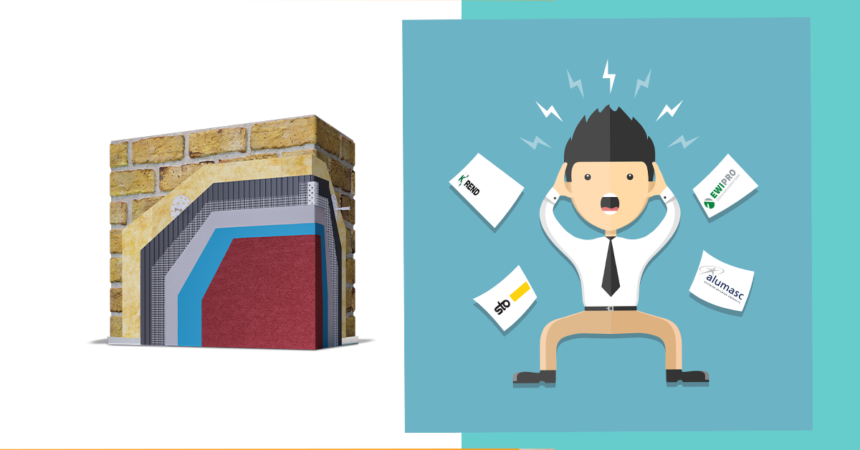Why you Shouldn’t Mix external wall insulation Systems
Systemically means effectively
What is an EWI System and what does it consist of?
There are around 60 BBA certified external insulation systems in the UK. That is a lot of choice, but what exactly does the system consist of?
There are several key elements that form part of this system. The insulation material, the fixing material, whether that be adhesive, mechanical or both, the base coat, mesh, and top coat. There are lots of variations on this, along with peripheral items like beading, verges, over-sills and starter tracks. The core parts of the system are usually the sum of the approval from the accreditation body however.
We get asked fairly often whether we can mix parts from different systems to get a job done, or keep cost down, getting adhesive from one system and fixings from another. There are plenty of problems associated with this, so we want to highlight them in this blog and show why Be Constructive never mix insulation systems to complete a job.
Systems are Extensively Tested and Approved to Work as a Whole
Each system that is approved goes through rigorous testing, looking at production, installation and how various parts of the product perform together. If you combine two different systems, you don’t know whether it is going to perform as intended. Even worse is when part of a system is mixed with a product that is simply not right for external insulation work – this can lead to some really serious problems with the installation.
Warranties – Can you get them on a Mixed System?
Simply put, you shouldn’t be able to get an industry or insurance backed warranty with a mixed system – it has to be a fully approved system installed to the manufacturers specification to be able to qualify for these kinds of warranties. We realise that there are companies out there that offer standard company warranties on this sort of work, but can you really trust them when they are mixing and matching products like that?
Examples of Issues with Mixing Systems
There are numerous examples that we come across where systems are being mixed. Some of them are fairly benign and will not have a huge impact on the final performance, but others are really serious problems, and it sometimes isn’t as obvious as you would like to think, so we always recommend using an installer that uses a complete system.
For example, we often see phenolic boards being used in conjunction with an adhesive and render from an approved system. Most manufacturers do not approve phenolic boards for external insulation work, because they can lead to cracking of the top coat after just a few years. This is much more common than you might think, and we really stress the importance of only using EPS or Rockwool insulation.
Another problematic one that we see is where dry fixing is used on a system that is not designed for it. Some systems are designed not to use adhesive on the back of the EPS boards, with just the mechanical fixings holding the insulation on the wall. If the system is designed to be installed this way, then you will still be able to get a warranty, but if not, then the system will very likely fail over its lifespan and you will have issues with claiming for any work on insurance or getting a manufacturer involved.
Another problem we have come across is where a standard cement is used instead of a dash receiver for a pebble dashing job. This can lead to really poor adhesion of the dash and lots of bare patches.
There are numerous other examples of problems we see – from incorrect fixings causing spots to appear on the render, to poor adhesion of insulation to the substrate creating damp internally. What ever you do, make sure your installer uses a product that is BBA approved and that they install the product correctly, or you will be causing problems for yourselves down the line.















No comments yet